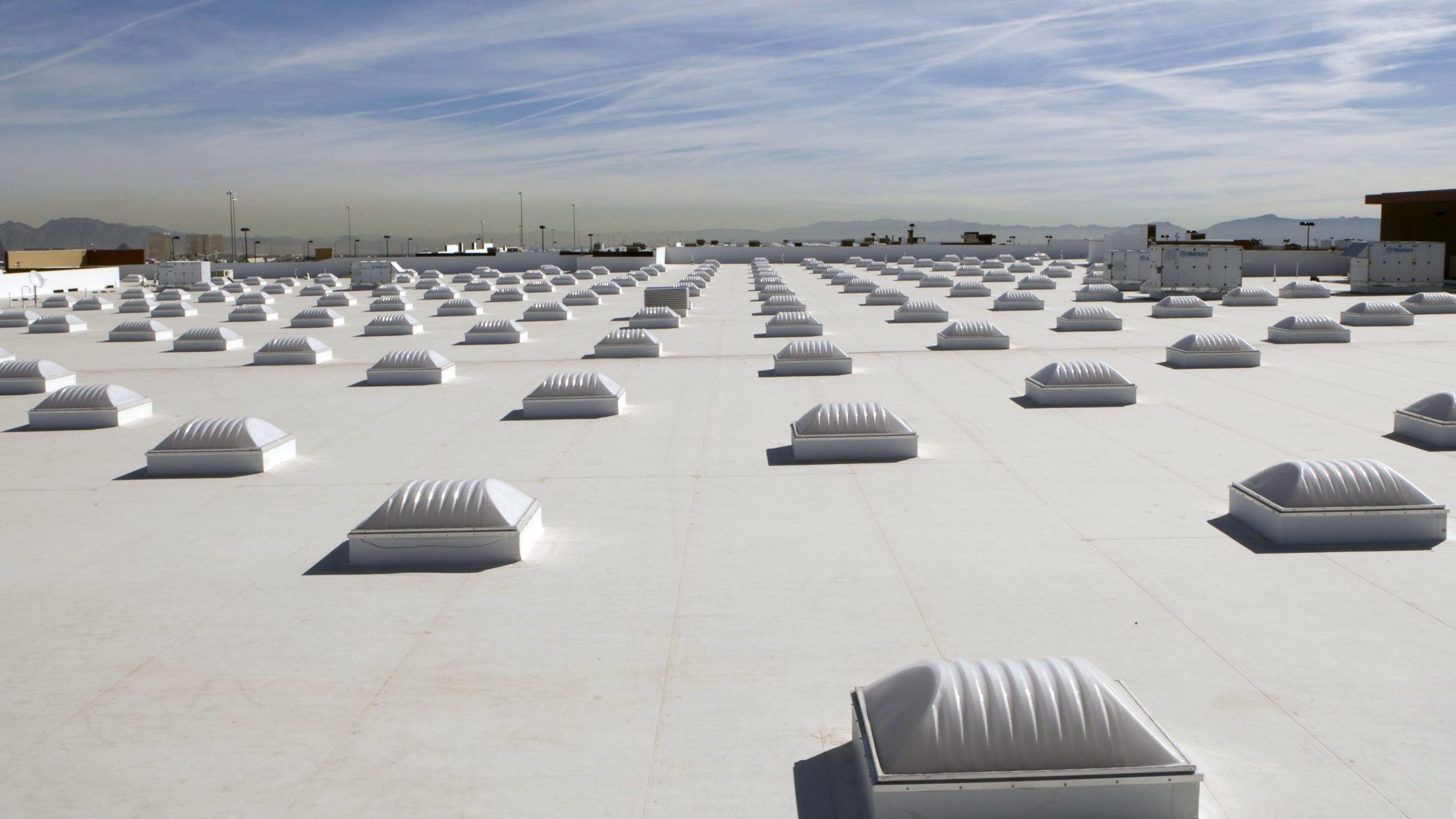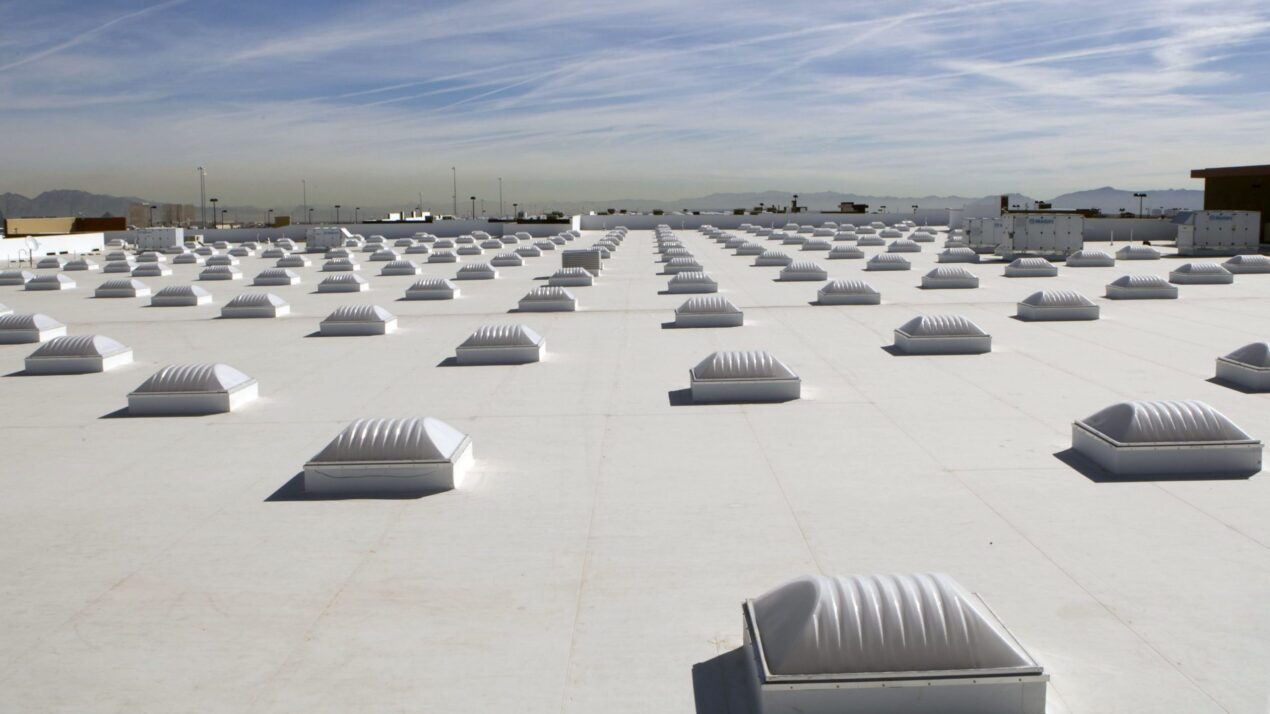
Cool roofs
Lead by Example

Summary
Cool roofs are designed with materials that reflect more sunlight than conventional roofs, reduce building heat retention, and in turn reduce the urban heat island effect. Cool roofs can reduce internal building temperatures by up to 30%.
Implementation
Demonstrate public commitment to and impacts of cool roofs by installing or retrofitting on planned and existing publicly-owned property.
Considerations for Use
Areas with cold winters will trade-off reduced heat retention during warmer months with increased heating needs and moisture buildup during colder months. Cool roofs work best in areas with uniform building heights. Shorter buildings may cause glare on taller buildings. Depending on the treatment applied, cool roofs lose some surface reflectivity over time. The cost of coating materials will vary based on selected coating and local availability. Integrating cool roofs in new construction is more cost effective than a retrofit, but cool roofs are still one of the most affordable and approachable retrofit measures.
Overview
Climate:
Hot/Dry, Hot/Humid, TemperatePolicy Levers:
Lead by ExampleGovernments have ownership and jurisdiction over a range of assets (e.g. buildings and streets) and also serve as a direct employer, and contractor. This allows them to promote heat risk reduction and preparedness solutions and demonstrate their impact through leading by example with proactive interventions to make their assets, employment opportunities, and contracts heat-resilient.Trigger Points:
Evaluating or initiating major city infrastructure projectsIncludes projects such as city transit, street or utilities construction / re-construction etc.No-regrets actions (low cost/low effort but substantial benefit)Interventions that are relatively low-cost and low effort (in terms of requisite dependencies) but have substantial environmental and/or social benefits.Planned new developmentIncludes Greenfield or brownfield development or new constructionSubstantial rehabilitationIncludes the re-development or major renovation projects.Intervention Types:
Buildings and Built FormSectors:
Buildings
Case Studies
Impact
Target Beneficiaries:
Heat-vulnerable communities, ResidentsPhase of Impact:
Risk reduction and mitigationMetrics:
Energy savings by building, Indoor air temperature reductions, Number of buildings compliant with provision, Outdoor ambient air temperature
Implementation
Intervention Scale:
BuildingAuthority and Governance:
City government, State/provincial governmentImplementation Timeline:
Medium-term (3-9 Years)Implementation Stakeholders:
City governmentFunding Sources:
Public investmentCapacity to Act:
High, MediumBenefits
Cost-Benefit:
LowPublic Good:
LowGHG Reduction:
MediumCo-benefits (Climate/Environmental):
Reduce greenhouse gas emissionsCo-benefits (Social/Economic):
Improve the public realm, Save on utilities
